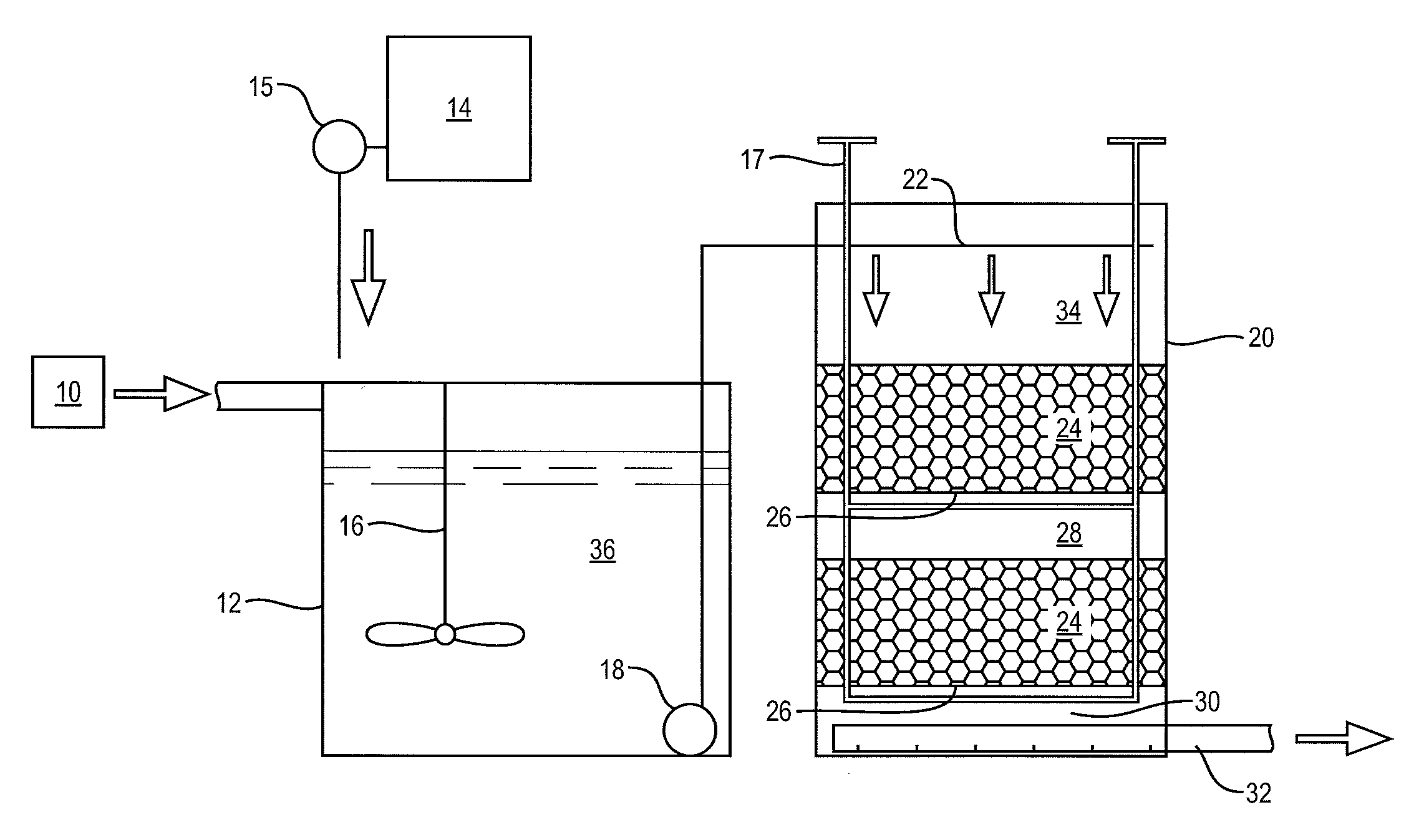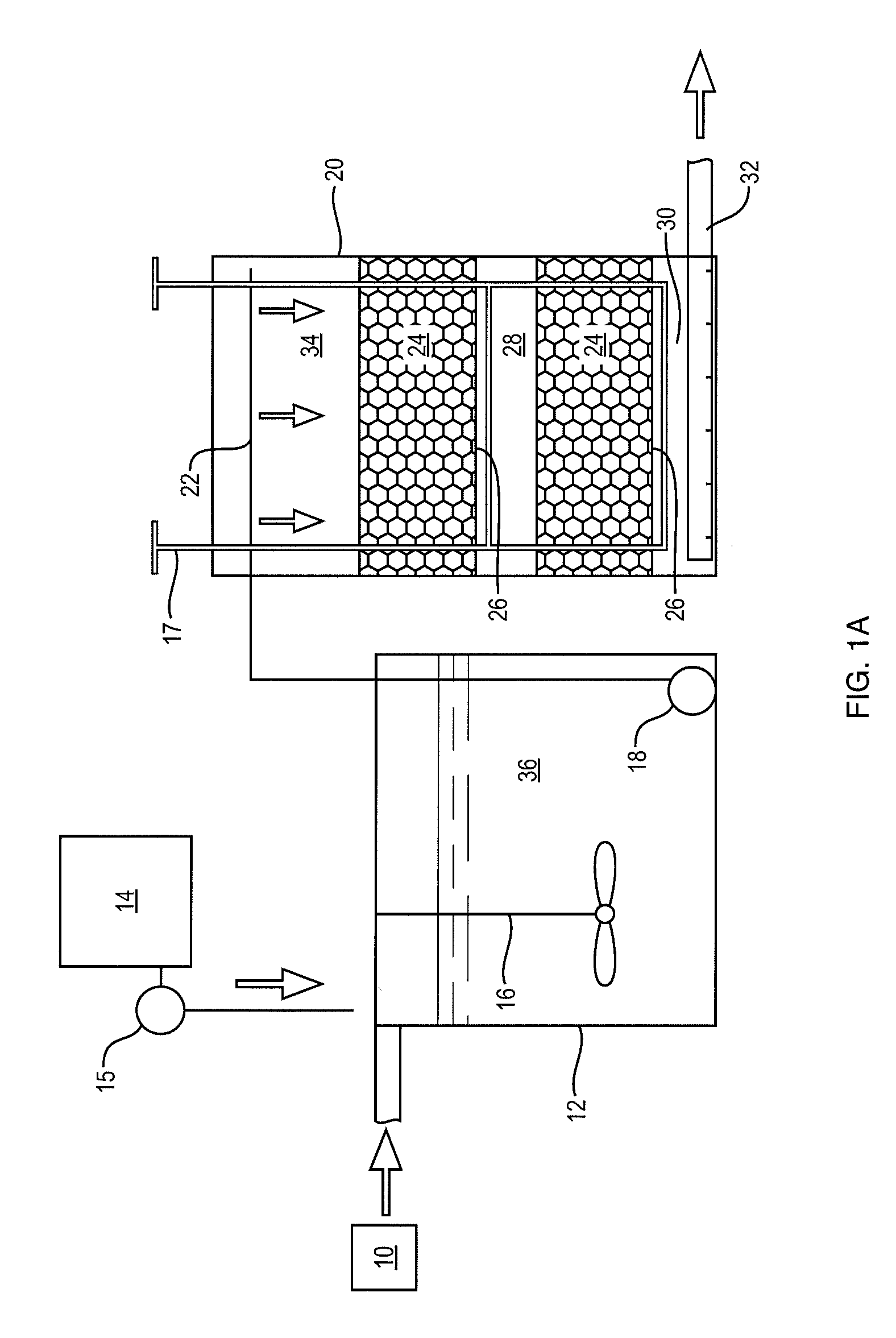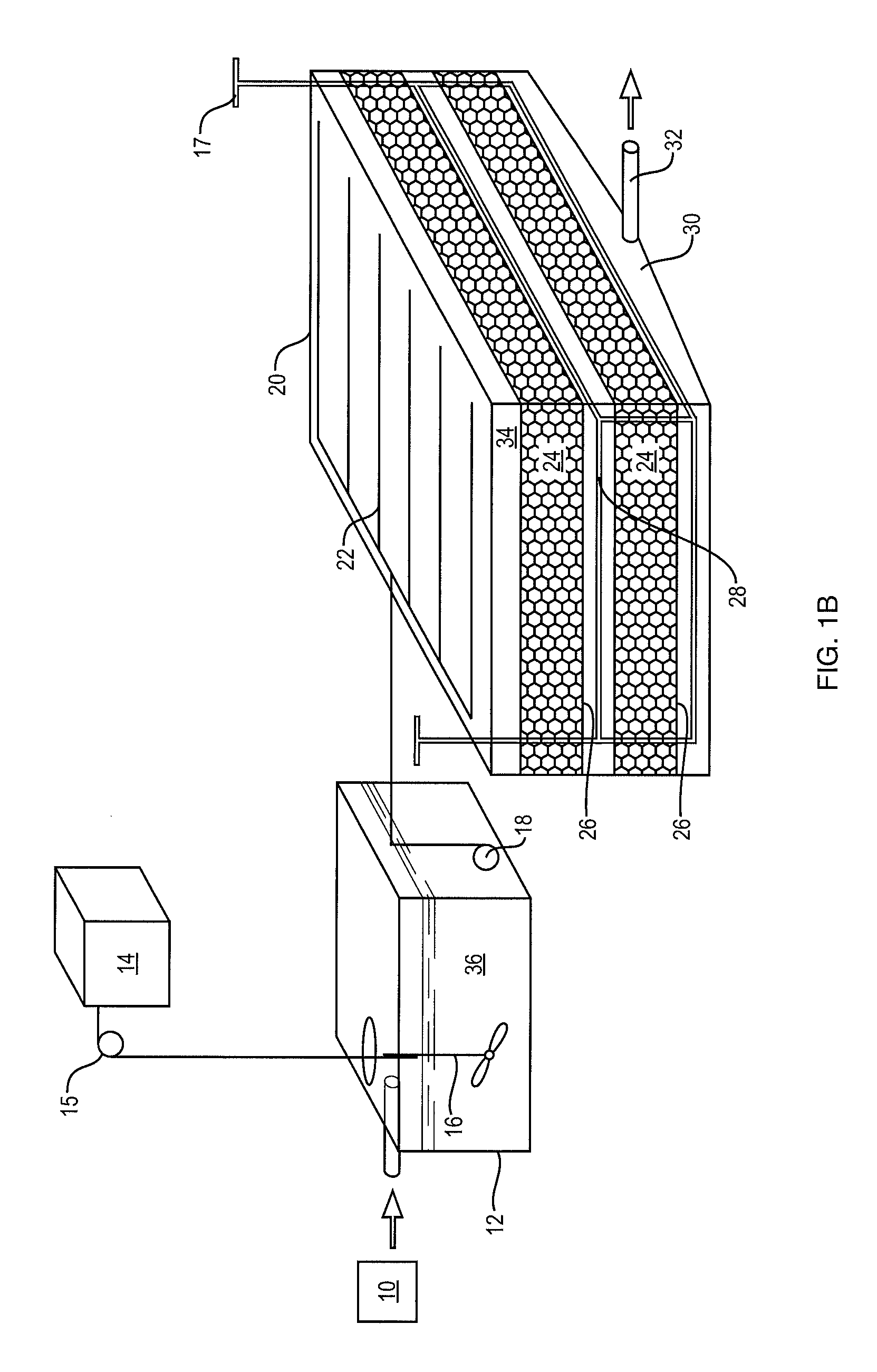Denitrification process
a technology of denitration process and denitrate, which is applied in the direction of sustainable biological treatment, biological water/sewage treatment, contaminated groundwater/leachate treatment, etc., can solve the problems of accelerating eutrophication of estuarine waters, slow growers, and difficult removal of nitrogen from wastewater, so as to reduce the total discharge of nitrogen, reduce the effect of nitrate pollution, and enhance the natural attenuation of nitrogen in soils
- Summary
- Abstract
- Description
- Claims
- Application Information
AI Technical Summary
Benefits of technology
Problems solved by technology
Method used
Image
Examples
Embodiment Construction
[0042]The foregoing will be apparent from the following more particular description of example embodiments of the invention, as illustrated in the accompanying drawings in which like reference characters refer to the same parts throughout the different views. The drawings are not necessarily to scale, emphasis instead being placed upon illustrating embodiments of the present invention.
[0043]The removal of nitrate from water (denitrification) is a microbially driven reaction in anoxic conditions where an available carbon is present. Denitrification requires nitrate, sufficient time, temperature, bacteria, available carbon and anoxic conditions. If there are sufficient conditions for denitrification, then the dissolved nitrate will be completely denitrified with the end products being free nitrogen gas, free carbon dioxide gas, dissolved organic nitrogen and dissolved organic carbon in the water and organic nitrogen and organic carbon in biomass. This biomass occurs as slime on the me...
PUM
| Property | Measurement | Unit |
|---|---|---|
| concentration | aaaaa | aaaaa |
| pore size | aaaaa | aaaaa |
| pore size | aaaaa | aaaaa |
Abstract
Description
Claims
Application Information
 Login to View More
Login to View More - R&D
- Intellectual Property
- Life Sciences
- Materials
- Tech Scout
- Unparalleled Data Quality
- Higher Quality Content
- 60% Fewer Hallucinations
Browse by: Latest US Patents, China's latest patents, Technical Efficacy Thesaurus, Application Domain, Technology Topic, Popular Technical Reports.
© 2025 PatSnap. All rights reserved.Legal|Privacy policy|Modern Slavery Act Transparency Statement|Sitemap|About US| Contact US: help@patsnap.com



